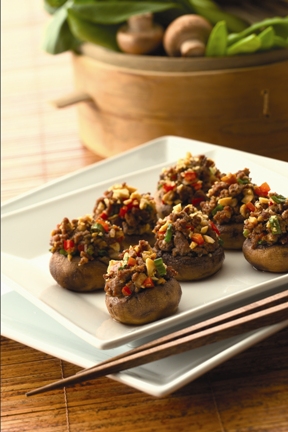Lamb on the Menu
02 June 2010
 A master class at the CAFÉ Leadership Conference this month will lend educators hands-on know-how applying several prevailing menu trends to versatile (and economical) lamb cuts.
A master class at the CAFÉ Leadership Conference this month will lend educators hands-on know-how applying several prevailing menu trends to versatile (and economical) lamb cuts.
Educators signed up for the “Deliver 2010’s Top Menu Trends with American Lamb” master class at the 2010 CAFÉ Leadership Conference at Baltimore International College, Friday, June 25, are in for a treat: The class will be led by veteran educator Frank Terranova, MCFE, assistant instructor at Johnson & Wales University in Providence, R.I.
“Lamb is my favorite meat,” Terranova says, adding that he’s an aficionado of domestically raised lamb, in particular.
Sponsored by the American Lamb Board and working with economical shoulder, leg and ground lamb, as well as the rack, Terranova’s class will address several leading menu trends this year—small delicious plates, street foods migrating indoors, comfort-with-a-twist and exotic ethnic on the cusp of mainstream. What’s more, Terranova will instruct on sous vide with American lamb. Select dishes prepared by class participants will be served at the conference’s welcome reception that evening following the three-hour hands-on immersion.
Growing in Popularity
Lamb is one of the most popular proteins on fine-dining menus, according to a recent report from Menu Trends™Direct. About three out of four fine-dining operators offer lamb on their menus. The demand for lamb is high and growing at the nation’s most innovative restaurants. Chefs are pairing lamb with traditional as well as new and interesting flavors from fennel to saffron to harissa.
Lamb is typically featured as an entrée. Rack of lamb is the most popular cut menued, followed by miscellaneous lamb chops, shanks and loin. Lamb shoulder, T-bones, sirloin, medallions, kebabs and ground lamb also appear on menus.
Grilling, braising and roasting led the list of ways chefs like to prepare lamb. Encrusted lamb appeared as a popular preparation method, as well. Crusts included a variety of ingredients such as: almonds, hazelnuts macadamia nuts, pecans, pistachios, garlic, herbs, mustards, goat cheese and olives.
Among fine-dining operators, 23% offer lamb specified as domestic, while imported lamb sources are mentioned by about 11% of restaurants.
Lamb appears with lower incidence on quick-service, midscale and casual-dining menus. About 14% of these menus include lamb, most often as a center-of-plate entrée. Much of this usage is linked to ethnic cuisines such as Indian, African and Greek/Middle Eastern. Examples of lamb use include gyros, Mediterranean lamb salads, lamb spring rolls, lamb puff pastries, lamb kebobs and satays, grape leaves with lamb and lamb samosas.
Register for the 2010 CAFÉ Leadership Conference here and select one of four three-hour master classes at Baltimore International College’s Culinary Center on June 25; if you’re already registered and have yet to select a class—participation in which is included in the full registration fee—contact CAFÉ at This email address is being protected from spambots. You need JavaScript enabled to view it. or call (410) 268-5542.
Photo caption: Mushrooms stuffed with a mixture of ground lamb, chopped red bell pepper, green onion, plum sauce and finely chopped peanuts exemplifies two trends in one: mainstream ethnic (Pacific Rim) and small plates. Photo courtesy of the American Lamb Board.
